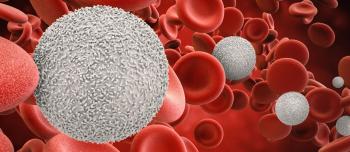A group of expert providers, patient advocates and government health officials is working to establish a common nomenclature to ensure consistency in the measurement of a patient’s reaction (virologic response) to new hepatitis C (HCV) drugs. The Hepatitis C Virus Drug Development Advisory Group (HCV DrAG) is focusing on a new class of HCV drugs--direct-acting antiviral therapies (DAATs). Donald Jensen, MD, professor of medicine at the University of Chicago Medical Center, explained the necessity for the nomenclature at a poster session during the International Liver Congress in Barcelona, Spain, on April 18-22, 2012.
HCV DrAG is a project of the Forum for Collaborative HIV Research, which has a subgroup devoted to HCV research with experts from the American Association for the Study of Liver Diseases, the European Association for the Study of the Liver and the Infectious Diseases Society of America. The forum is a broad consensus panel that includes industry representatives, members of American and European drug regulatory agencies, academic investigators and representatives of advocacy groups.
Clinical studies become extremely challenging if not impossible without a commonly understood and accepted nomenclature. Jensen noted that the existing terminology can be confusing and inconsistent. “We felt that there was a need to have this description of virologic responses more consistent across studies--something that could also be used in manuscripts and in clinical practice,” he said. HCV DrAG therefore focused on a nomenclature “that was intuitive, that made sense, and that was descriptive of virologic responses during the course of therapy for hepatitis C.”
The nomenclature put forward by HCV DrAG sets clear time frames, parameters and common terms for gauging a patient’s response to DAATs. One example is the lower limit of quantitation (LLOQ) of a virologic assay, a test used to measure HCV viral load. Because of the use of a variety of commercial assay systems in current trials, the target may or may not be detected at levels that fall below the LLOQ. That’s why the LLOQ needs to be clearly established.
The nomenclature will still include the term “sustained virological response” (SVR), which indicates a patients’ ability to “clear” the virus. SVR is a treatment goal because by lowering the viral load to undetectable levels in the bloodstream the patient often avoids the disease’s most harmful effects. “We decided to keep SVR...but it will be sustained virologic response with a bracket after it” to signify how long the response has been sustained, Jensen explained.
DAATs, such as the recently approved protease inhibitors (PIs), represent the first new class of drugs for the treatment of chronic HCV in 10 years. They work bypreventing viral enzymes from replicating. When used in combination with interferon/ribavirin, DAATs help boost the success of HCV therapy.. In May 2011, the U.S. Food and Drug Administration (FDA) approved two new PIs: boceprevir under the brand name Victrelis™ (Merck) and telaprevir under the brand name Incivek™ (Vertex Pharmaceutical). There are more DAATs currently in clinical development. “We wanted to do this before all the new oral therapies hit the market,” added Jensen.
The panel has submitted a manuscript for publication. Jensen hopes that industry will adopt the system for clinical trials and that journals will require the system as the accepted nomenclature. The FDA and the European Medicines Agency are in favor of using the nomenclature.
Source: Medscape.com, May 8, 2012





